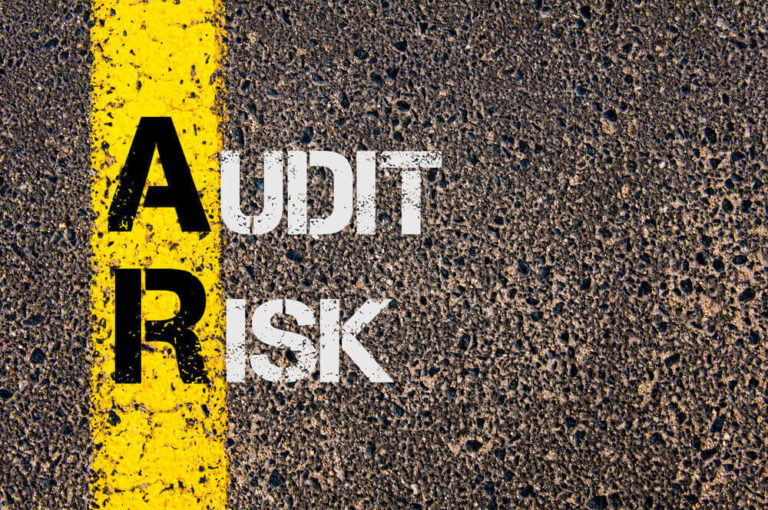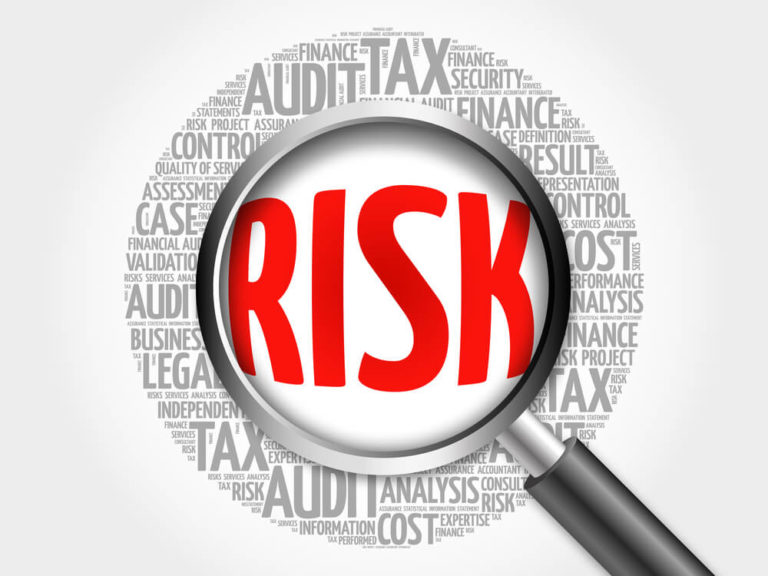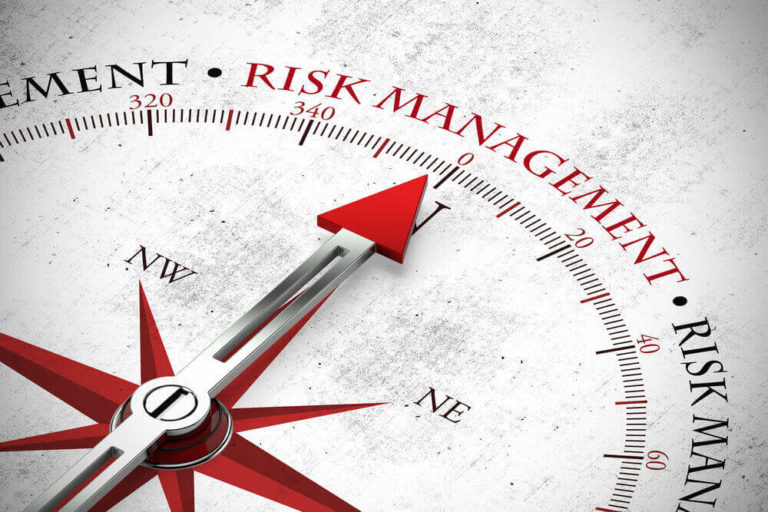A global risk management report shared that 57% of senior-level executives rate “risk and compliance” as one of the top risk categories they feel least prepared to address. That is why knowledge about the fundamentals of risk management process is pivotal to prepare for emerging threats and evolving risks.
Table of Contents
What is Risk Management?
Risk management is the process of identifying potential risks to an organization’s capital, earnings and finding ways to counteract those risks.

Risks can be measurable like insurance premiums or claim costs, or immeasurable like damage to reputation or decreased productivity. In addition, threats may come from things like financial uncertainty, staff mistakes, accidents, legal liabilities, or even natural disasters. There are also IT security threats or data-privacy risks where a companies’ intellectual property may be stolen, or a customer’s personally identifiable information (PII) may be exposed.
Risk management means focusing attention on potential risks, much like a Health & Safety audit, and then commit resources to mitigate these risks. Businesses must do this in order to protect themselves from harmful events, prepare for unexpected costs, and improve the chances of continuity and success.
You can also use risk management for upcoming projects. As any Project Manager will tell you, part of the planning stage involves anticipating risks. In this case, a risk would be anything that might derail your project’s timeline, performance, or budget.
Types of Risk
We commonly refer to risks as exposures to loss, or simply exposures. For example, defective products are liability exposures, as is defamation. Any loss of business due to a damaged building or a tarnished reputation is also exposure.
The extent of risk can be expressed as –
Risk = Probability x Severity
The probability is the likelihood that an event will occur, and severity is the degree or cost of the emanating loss.
We can break down risks into two categories:
1. Pure Risk – these are risks that involve loss of some kind, from a fire breaking out, to theft, to an employee accident.
2. Speculative Risk – these risks are like gambling. When you invest in stock markets, there is an opportunity for profit, but there is also a risk of loss. Traditional insurers will not cover speculative risks.
What about Positive Risk?
People tend to assume that risks are always negative. It implies something unwanted that has the potential to damage a project or company reputation. Positive risks are unforeseen benefits such as completing a project early, gaining more customers than forecast, earning more revenue than normal etc.
Responding to Positive Risk
Just like for negative risks, you will want to strategize to make the most out of positive risks.
1. Is a positive risk something you can exploit? If so, figure out ways to increase the likelihood of the risk occurring.
2. Think about sharing the positive risk. You might not be equipped to take full advantage, but involving a partner may allow you to fully reap the rewards.
3. Sometimes there is nothing to be done. This can be the most appropriate response to simply sit back and do nothing! Enjoy the benefits of the positive risk and chalk it up to a job well done.
What are the Benefits of Risk Management?
A robust risk management plan will aid organisations with procedures that not only avoid potential threats but minimize their impact with coping strategies.

The benefits of Risk Management are:
- More confidence in business decisions
- A safe working environment for staff and customers
- Protects from events that might damage the reputation
- Increased business stability for operations
- Decreased legal liability
- Protects people and assets from harm
- Saves on unnecessary insurance premiums
What is the Risk Management Process?
The risk management process includes identifying, analysing, monitoring, and handling potential risks and their negative effects on a business. Some examples of potential risks found in risk management are – security breaches, data loss, cyber-attacks, system failures and natural disasters.
So why risk management process is important?
Risk management process is important in any business. Because it empowers a company with all the necessary tools to identify and manage potential risks adequately. Also, through this process, management gets essential information that they can use to make informed decisions and ensure that the business remains profitable.
6 Steps of Risk Management Process
A risk management plan should follow these six simple steps:
1. Identify the Risk
2. Analyse the Risk
3. Rank your Risks
4. Treat the Risk
5. Monitor and Review the Risk
6. Communicate Risks

Step 1: Identify the Risk
You and your team will recognise and define potential risks to the company or project. You can use a Project Risk Register to find and describe risks. A Project Risk Register is a template that will help you add structure to the risk management process.
Step 2: Analyse the Risk
Now you will decide what the likelihood of each risk is and what the consequences will be. Develop an understanding of each risk and how it has the potential to derail project goals or company profits. Think about what the odds of each risk occurring are.
Step 3: Rank your Risks
Evaluate the risks by determining each risks’ magnitude, this will be based on both the likelihood and consequences of each risk. You will then decide if a risk is acceptable or warrants a change in strategy. Rank your risks in order of the worst possible outcome to the least negative impact.
Step 4: Treat the Risk
It is also known as Risk Response Planning. You will now examine the worst risks and make a plan to reduce the possibility of these occurring. Create risk mitigation strategies by coming up with contingency plans in the event that a risk will happen. This will also include preventative plans to minimise the risk from occurring.
Step 5: Monitor and Review the Risk
Part of the mitigation strategy includes following up regularly to monitor new or existing risks. The overall risk management process should be reviewed continuously and updated as needed.
Step 6: Communicate Risks
Share your findings with all internal and external shareholders, from the appropriate steps in the risk management process to the ways of mitigating risks.
How to Conduct a Risk Audit?
Using the following framework, you can quickly and easily conduct a risk audit while keeping your team informed.

The first three elements assist in the recording of identifying the risk:
1. Categorise Risks
Group risks by type, for instance – is this an environmental risk or a resource risk?
2. Describe Risks
Write a brief description of each risk. For example, “If we have a data breach where customer PII is exposed, our company’s reputation will be tarnished, resulting in loss of existing and new customer revenue.”
3. Risk IDs
Give each risk a unique identification number. First, number by category and then in order of risk, so if the Resource’s category is number 4, then the first risk in that list will be 4.1.
The next three elements help you to analyse the risks:
4. Project Impact
Describe the potential impact that risks might have on a project. For example, “The project might take longer than expected and therefore cost more money.”
5. Plausibility
Describe the likelihood that the risk will actually occur, take into account the probability and define the risk as high, medium or low. Look at past projects or events. Has this potential risk happened before? If so, it is likely to happen again without the proper measures in place.
6. Consequence
What are the consequences if a risk were to happen? Are these consequences High or Low? A Low consequence might be loss of time because a project does not run on schedule. A High consequence could be employees dying in an office building fire.
The following two elements assist with risk ranking:
7. Risk Magnitude
Use a combination of plausibility and outcome to rank your risks from High to Low.
8. Risk Trigger
What would be the trigger that results in requiring a contingency plan?
These next four elements help to record the treatment of risk:
9. Prevention Plan
This would be the action plan that avoids the risk from happening in the first place.
10. Contingency Plan
This is the action plan in case the risk should occur.
11. Risk Owner
Identify the person who is responsible for managing risks and enforcing the Prevention and Contingency plans. This could be a stakeholder or a Project Manager.
12. Residual Risk
This is whatever risk remains after the Contingency Plan has been actioned. Usually, the residual risk will be Low.
Risk Management Strategy
To assist with the process, ask yourself the following questions:
- What might go wrong? Think about the workplace as a whole, as well as individual work.
- How will each risk impact the organization? Consider the probability of risk and what sort of effect it will have, whether large or small.
- What can be done to prevent loss? What are the steps to recovery if a loss does happen?
- If something goes wrong, will the company be able to pay for it?

Once the risks that are specific to the organisation are identified and the risk management processes are actioned, you must then look at the different types of risk and decide on the strategy.
Risk avoidance
While it is rarely possible to completely eliminate risk, a risk avoidance strategy will allow you to avert the maximum number of damaging events.
Risk reduction
It is often possible to lessen the damage made to company processes by certain risks. You can achieve this by adapting key facets of a company process or project plan.
Risk sharing
It is sometimes the case that the fallout of risks will be shared among several departments or even a third party such as media partners.
Risk retaining
Often, a company will determine that a risk is worth taking from a business point of view. This tends to happen if the potential profit is greater than the projected loss.
Risk Management Tips
Knowing the risk management process isn’t enough. That’s why we have some bonus risk management tips for you.
Following are some risk management tips that might be helpful to you –

1. Keep old Insurance Policies
It is possible for a significant amount of time to have passed between the risk occurrence and the actual loss happening, so keep those old certificates! They are assets and proof that coverage existed. They set out the terms and conditions of coverage, should you need to review them at a later date.
2. Insure to the Correct Value
Ensure that the value of your assets is accurate when you report them to insurance companies. Whether you over or underestimate the value of your property, it could cost you money either way. Have appraisals done if you are not sure of your worth because if you estimate too high, you will pay more premiums, and if you estimate too low, you will not get the full worth if you need to claim.
3. Actual Cash Value (ACV) vs Replacement Cost
The actual cash value of assets means the replacement cost minus depreciation. It is important to notice if a property policy covers the ACV or the replacement cost and ask your broker which suits you best.
Even new items can be depreciated, so if you have a replacement-cost endorsement, the insurer will only pay you the depreciated amount. Until you have replaced the assets and submitted receipts, at which point you will receive a top-up of the replacement cost.
4. Spend Money and Time on Loss Control
It is good practice to allocate loss prevention money and resources every year. Studies show that money is saved when it is spent on prevention.
Look at the costs associated with your risks and then compare them with the costs of prevention measures. Depending on your budget, you should decide how much to invest.
5. Protect your Image
Safeguarding your company’s appearance is crucial. Part of your risk assessment must include thinking about threats to the organisation’s reputation. Make sure staff are trained in crisis management or consult with an image expert.
6. Sell yourself to your Insurer
Brag to your insurers about your risk management, from loss control, prevention measures, policies, and procedures. Give your broker copies of inspection forms, accident reports and training programmes. Do not sell yourself short, and you could get favourable consideration.
7. Incorporate a Risk Management Attitude
Integrate risk management awareness into all that you do, from hiring to training or investments. You do not need to spend vast amounts of money or time on this. Just be sure you keep potential costs and risks at the front of your mind when making decisions.
8. Cooperate with Insurers
Make sure you build good relationships with your insurance broker. It is a bad idea to get confrontational when it comes to claims, or it may seem like you are hiding something. Brokers have no tolerance for dishonesty.
9. Loyalty vs Shopping Around
There are benefits to staying loyal to an insurance company. Long-term customers tend to get special treatment with better rates, especially if you establish a rapport with your service providers.
There are also benefits to shopping around every two to three years, especially if you have received a large rate increase lately. Insurers prefer long-term customers, so they should do their best to keep you around. Conversely, some insurers may not want to work with you if you swap insurers every year. If you have had plenty of claims, it is best to stay with the same insurer until they lessen.
If you are thinking of leaving your insurance company, get the ball rolling by speaking to your broker at least 90 days before the renewal date of your current policy. This leaves plenty of time for negotiation, and you may even find that you get a better deal and can stay put.
10. Insurance Renewals
Spend some time drawing up a professional renewal submission that is both thorough and succinct. Leave out any unnecessary information. Keep a copy of any applications in case you need them again.
11. Handling Accidents and Losses
As careful as you are, accidents can still happen. What matters for the claim is how the accident is handled. For instance, if someone is injured and feels they have not received respect and compassion, they will be more likely to seek compensation. If a poorly handled incident should be publicised, this would also damage your company’s reputation.
Risk Management and Insurance: How does Insurance Work?
Insurance companies work by combining the money from a large group so that if one suffers a loss, the combined money will pay for the loss. As a result, businesses or individuals can afford the annual cost of insurance and enjoy the peace of mind that comes with it so that a significant loss will not mean bankruptcy.

Adjusted Underwriting Profit is what an insurance company earns after claims and expenses. They earn revenue by underwriting new insurance policies and investing. If they earn less than the payout, this is called an Underwriting Loss.
Underwriting means the process of deciding what to insure and how much it should cost. If an underwriter does their job properly, then the insurance company can forecast how much they are likely to pay in claims and expenses. They must then decide how much to charge for premiums to make a profit.
Most insurance companies make profits on investment income. This is because insurance companies rely on the period of time between premiums being paid and losses being collected. When a return on investment is high, insurers can manage underwriting losses and still make a profit. However, if the return on investment is low, insurers tend to make their premiums higher to recoup the difference.
It can be a challenge to budget for premiums as they can vary so much depending on how well the Insurance company is doing and how often you need to claim. If you have a good loss ratio and do not need to claim often, you should achieve more preferential terms and prices. Conversely, if you have a bad loss ratio, then you may have exclusions added, have limits reduced, and deductibles increased or not renewed.
Regardless, it is important to ensure your risk management is robust.
Factors that may Affect your Insurance Premiums:
Here’s a list of factors that could potentially affect your insurance premiums –
External Factors:
- The Stock Market
- Reinsurance
- Catastrophes
- Insurance
- Legal
- Culture
- Type of Industry
- Interest rates
Internal Factors:
- Risk
- Industry
- Policy Limits
- Coverages
- Values
- Operations
- Loss Control
- Claims
- Deductibles
Definition of Key Terms Used in Risk Management
Following are some useful terms or keywords used in risk management and what they mean.

- Claims – You can generally expect an increase in the premiums you pay if your claims consistently cost the insurer more.
- Industry – The type of business you are in will also affect your premiums.
- Loss Control – Your business should have safeguards in place against risk so that insurers will look at you more favourably. Sprinkler systems, alarm systems, safe driving policies, etc., will all improve your chances to save on premiums.
- Operations – Your business will be measured based on the types of risk management processes you have and the types of threats you face.
- Deductibles – Normally, you will have a choice on the deductibles of your policies. The general rule of thumb is, the higher the premium, the lower the deductible.
- Policy Limits – Choose the amounts of your policy limits wisely, as this will affect your premium.
- Coverage – Most of your coverages will be essential. Still, it is possible to have unnecessary coverage, so make sure to speak to your broker every few years to make sure all coverages are required.
- Values Insured – Make sure your values are accurate, as if the value of your assets is higher than needed, you will be paying a higher premium unnecessarily.
- Risk Management – Insurers will consider the risk management of an organization when deciding what the premium will be. An organization with strong risk management processes and a proven track record in managing risks will be looked upon more generously by insurers.
In Conclusion
An example of risk management might apply to a new business looking for a location for a shopfront. The business can lessen risks by choosing a location with high foot traffic and little competition from similar businesses in the area.
A different example could be a business with outdoor seating. They must admit that their business is weather-dependent and ensure they spend low to build up cash reserves to alleviate losses from bad weather.
An example of risk acceptance might be with an investor buying stock. Maybe it is an exciting new company with a high valuation. The risk here is that the stock may drop considerably. If the investor buys despite the threat, it is because the potential of a large return on investment outweighs the risk of los
Recent posts
- Mastering the Dissertation: A Comprehensive Guide to Academic Success
- Challenging Behaviour in the Classroom [Types & Solution]
- The Impact Of Remote Work On Women In The Marketing Industry
- Differentiating Web Design and Web Development
- Top 10 Social Media Management Tools for Businesses in 2024
- Why is Child Development so Important in Early Years
- Line Management: How to be a Good Line Manager?
- How Long Should a Health Sector Career Take?
- The Importance of BSL in Everyday Life
- Why Corporate eLearning is Essential for Organisational Training







 July 19, 2021
July 19, 2021








